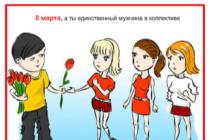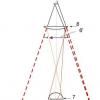Before moving on to detailed consideration one of the most effective marketing tools, you need to give a clear definition of this concept. In fact, this is the achievement of the strategic and tactical goals of the company by satisfying. But there are many ways to reach a person's heart. But how can this be done in the shortest possible time with minimal use of the resource potential of the enterprise? The complex will give us the answer Marketing 7P. It includes the following elements:
— product,
- place,
— promotion,
— price,
— people,
— process,
— physical evidence.
Marketing Mix 7P
Each of them can bring to the company, but only in combination they become perfect tool. Let's talk about each of them in more detail. Product- this is the assortment, the level of quality of the goods, the width of the nomenclature. place- the path that products make when they get to the shelves: delivery routes, storage warehouses, and so on. Promotion- any company needs to advertise itself, stimulate sales, convey information about promotions and discounts. Need to sign contracts with advertising agencies, create sponsorship programs, engage in charity. The organization and control of such processes is engaged in promotion, literally promotion.
price- . But is everything as simple as it seems at first glance? After all, the cost is the most powerful tool to influence the consumer. For example, when entering a store, a person sees a whole range of products, already at a price he can draw preliminary conclusions. If a product is expensive, then it must be something better than the rest. People or personnel in different textbooks can be written this way and that way, there is no fundamental difference. These are people who work at the enterprise, deliver goods, and contact direct customers. process- the process of providing services. physical evidence- environment, office, trading floor or lawyer's waiting room. The main role is played by the situation, objects hanging on the wall of letters, certificates, licenses.
The history of the development of the complex marketing mix started with standard 4Ps, then in the process of constant evolution, new “Ps” began to stand out. As a result, the latest development has as many as 12 elements. However, many recognized experts consider such a deep differentiation as redundant. But there is one more "P", which is still worth talking about - Partnerships or long-term cooperation. This element includes all actions aimed primarily at strengthening long-term relationships with customers. As a result, it is reduced client base companies, but the profitability from each consumer is growing, due to an increase in the number of services provided to him.
The main idea is quite simple, by combining all these elements, the author of a long-term strategy will get a winning combination in the struggle for leadership. 7R- one of the strongest, designed to sell primarily services. It is in such an environment that it will be most effective. With these seven elements, you can create more than just an effective tool to deal with competitors. This complex can become one of the main cogs in a huge business machine to gain leadership positions in the market.
There is an easy-to-remember principle, consisting of 5 rules, on how to quickly and reliably achieve success in any of your affairs that bring results not immediately, but in the near, medium-term or long term.
For example, these could be:
- Work, career, business.
- Learning or developing certain skills.
- Comprehending any art.
- Formation of good habits.
- Changing yourself...etc. and so on.
Not taking into account any of the components of the “5P principle” immediately affects the time to achieve the goal and can either greatly increase the time frame or even lead to the impossibility of achieving the goal. Therefore, all these recommendations should be implemented in a complex.
And another note. Rapid achievement of success in the context of the 5P Principle does not mean instantaneous or very short-term achievement of the goal. This only means that following the 5P principle, you will spend the minimum possible amount of time. But this could already be a huge breakthrough.
You can learn English for years, or you can learn enough high level for 3 months. You can read a maximum of one book a week, or you can learn to speed read and read one a day.
Or you can, say, try to remove belly fat from the age of 30 until old age (without achieving significant success), or you can do it in a few months and forget about this problem altogether, devoting no more than 5 minutes a day. There are many examples. The 5P principle works for all of them.
Let's move on to the description of the "5P" sections. For each rule, for additional illustration, wise phrases of our ancestors are selected.
So, if you decide on something "seriously and for a long time", then you need to do this:
1. Constantly
This means that in order to achieve rapid success in realizing the goal, you need to do certain actions every day. Ideally, not just, let's say, "every working day", but in general every one, including any weekends, vacations, illnesses, etc.
And when you achieve a goal, more often than not, you will need to spend time maintaining it or further development.
In many cases, rather short-term efforts are needed, but constant ones are a must.
"A sword that is not polished will rust." (Japanese proverb)
“A drop hollows a stone not by force, but often falling.” (Giordano Bruno)
"Great things require tireless constancy." (Voltaire)
2. Gradually
A very important rule, which can be briefly described by the phrase: "From simple to more complex."
Each new skill should lay down on a certain accumulated basis. You can not rush and step over to the next level ahead of time or immediately take on "aerobatics".
"Hurry breeds error." (Chinese proverb)
"Great haste brings great delay." (German proverb)
3. Sequentially or Planned
The first step is to define your end goal. And after that, a sequence of pre-thought-out and calculated actions is needed, leading to the achievement of this goal. ultimate goal.
You should break the global goal into specific intermediate steps and write them down, ideally with deadlines and “deadlines”. Moreover, the previous rule of gradualness must be observed here.
“The flower will not bloom - the fruit will not tie ...” (Chinese proverb)
“The future must be embedded in the present. It's called a plan. Without it, nothing in the world can be good.” (Georg Lichtenberg)
4. Long
As a rule, in order to achieve even the first significant results, certain time and you need to be prepared for this. Accepting and following the recommendations of the "5P" greatly reduces the time to achieve the goal, but still the time factor remains. And, most likely, even when you get great results, in the future you will need to spend time on "keeping in shape."
“You shouldn’t pull rice sprouts, they won’t grow faster from this, and it’s easy to cut off.” (Vietnamese proverb)
"A child must be gestated for a certain time before being born." (People's observation 🙂
5. Right
It is important to start following the right methodology from the very beginning in order to put yourself on the “right base”. In other words, it is necessary to “pick up” the theory.
Following the methodology constantly creates and consolidates more and more necessary foundations (base, foundation) for further rapid growth. Any correct technique necessarily includes the previous recommendations: Persistence, Graduality, Consistency, Duration.
Another criterion for a correct methodology is that by applying it, anyone can achieve impressive success within a specified period, and not just a gifted one.
The difficulty here, as a rule, is to find such a technique for yourself.
In most cases, there are several correct methods, of varying degrees of effectiveness and suitable for different types of people. You should rely on those that have proven their effectiveness in numerous examples.
And one more observation. Following the correct methodology usually gives a significant tangible result after 3 months (subject to other principles).
"Practice without theory is dangerous, theory without practice is useless." (Authorship unknown).
“Three paths lead to knowledge: the path of reflection is the noblest path, the path of imitation is the easiest path, and the path of experience is the most bitter path.” (Confucius)
And its ingredients from the moment of creation, and the transformation of the concept under the influence of society, technology, media and information.
In its purest form, marketing is the process of identifying, anticipating and fulfilling the needs and desires of customers in order to generate profit. Traditional Marketing consists of 4 parameters: product, price, place and promotion (4P). This concept has been hugely popular for many years, although in the mid-60s of the last century, 12 factors were originally proposed that the marketer needed to mix, control and manage.
Marketing mix
The wording "mixture of ingredients" was so liked by specialists that it gave rise to the term "". This concept made it possible to briefly explain the concept of combining all the main marketing factors that contribute to the success of the company.
Today, marketing mix is one of the most popular marketing concepts and a core element of any marketing strategy. Integrations of all ingredients effective marketing allows:
- analyze and identify the consumer value of a product or service that you have to offer to the market
- determine the channel for the effective distribution of your goods and services, where the consumer can get acquainted with your assortment and make a purchasing decision
- set a suitable and competitive price for consumers for your product or service, taking into account the priorities and limitations of the target audience
- identify and use suitable advertising media mass media that effectively convey the unique value propositions of your product
Thus, the marketing mix provides you with a comprehensive and holistic approach to building a marketing strategy and gives you a direction to achieve the main goal of any business - profit. The combination of the impact of the marketing tools used helps to identify your advantages and appreciate them, building effective communication With target audience.
Classic 4P Marketing
The traditional 4P marketing model has been the basis for making important marketing decisions and monitoring the execution of marketing plans for decades. This is a narrow and product-oriented strategy. This model is used by companies to determine the product on the market that can bring profit to the enterprise. Success or failure depends on the choice of a set of measures.
The classic concept of marketing is based on four basic elements (4Ps)
- Product, which should cover the needs of consumers and meet their moods and expectations. The focus of efforts is on ways to solve customer problems.
- Price- the product in terms of consumption can always be considered as a good value for money. But this does not mean that it should be as affordable and cheap as possible. One of the main principles of the marketing concept is that customers are usually willing to pay a little more for something that most effectively addresses their hidden internal needs. The focus of efforts is not on cost, but on the benefit of consumption.
- Place– the product must be available where your target consumer and it's easy for him to make a purchase. It could be a popular hypermarket, or a teleshop, or your e-commerce website. Depends on the preferences of the target audience. The focus of efforts is on the availability of the product for purchase.
- Promotion- advertising, PR - promotions, sales promotion, personal sales and other ways of communicating with customers. These tools need to be used to get the message across to the target audience in the place and way they would most like to hear it. The focus of efforts is on providing information to the buyer at each stage of the sales cycle about specific features that form the need to purchase.
Traditional marketing mix was developed and gained popularity in an era when most businesses were engaged in the sale of goods. Any provision of service and the role of good customer service has been largely ignored. The potential for positive brand impact on sales and customer experience has not yet been fully realized.
In the late 70s it was widely recognized that the concept of marketing needed to be updated. This led to the creation of extended marketing. This made it possible to include marketing strategies services, not just physical goods.
Marketing 5P - 6P - 7P
 | Given some of the shortcomings and limitations, marketing experts have expanded the classic marketing model. A fifth ingredient has been added - People(fifth "Pi"). The basis for this was the understanding of the fact that people who sell goods or provide services to a client play important role in communication and have a significant impact on consumers. |
 | The marketing classic F. Kotler suggested adding his own parameters to the original model - political power and the formation of public opinion(fifth and sixth "Pi"). It was taken into account that when entering new, as a rule, foreign markets, it is necessary to satisfy an audience outside the existing target market. It was governments, regulators, trade associations, and even many other interest groups that had power over the local market. Thus, for the company there was a need to enlist the support of political authorities and public opinion. |
 | Gradually, the service sector became an independent research area for marketers. Therefore, the time has come and a new concept of 7P marketing has been proposed, called extended marketing - mix. 3 new Pis were added to the classic version, which are directly related to the provision of services. This - people, process and physical evidence of proven quality. |
Currently, such a concept is needed to develop effective strategies in the field of consumer services (B2C) and services for business (B2B). It may also cover elements in the traditional physical goods sales environment, such as customer service and technical support.
Does 8P marketing exist?
Although 7P marketing takes into account changes in the commercial environment, constant innovation forces marketers to adapt the "mixture of ingredients" to modern conditions. In complex control systems necessary condition profit is the increase in labor productivity, contributing to the reduction of costs. In addition, service quality management becomes especially important for differentiating oneself from direct competitors.
Performance and quality is the eighth Pi associated with services efficiently produced with company resources fairly procured at the lowest cost.
The overall profitability of the company can significantly increase not only due to increased sales. Often in the service industry variable costs much more than the fixed costs and therefore incremental costs, if properly managed, can have a huge impact on performance. It was also found that the improvement of the service delivery process is achieved through standardization. Thus, a company can greatly benefit from proper process reengineering if it improves productivity at every stage.
Proper quality is an important differentiating factor, is positively perceived by customers and ensures the sustainability of the business in the long term.
21st century marketing
Online communications
The information revolution and the introduction of Internet technologies into everyday life have changed the way of life. Social media, blogs, and online communities have redefined how people relate to information itself, to company brands, to other consumers, and even to themselves. Marketers cannot be indifferent to this changing environment. They are forced to rapidly rethink how companies do business, develop innovative approaches to marketing, and understand what is going on in the hearts and minds of their current and potential customers.
Recent studies of young people in the 15-24 age group have shown that they spend 6 to 10 hours on the Internet every day. They use this time for a variety of activities, ranging from searching for information, downloading music and videos, to chatting with their friends on instant messengers. Marketers simply have to use these touch points with their target audience to promote products and services.
Consumer brand involvement
The idea of increasing the effectiveness of marketing through the creation of a sense of belonging of consumers to the brand in cyberspace has become important. Customers become, as it were, accomplices in the business process, as they have new technologies and can choose the form of consumption that is convenient for them, taking into account their habits (for example, you can watch a movie not only in a cinema, but online, or download a movie without ads and watch him later in a comfortable environment).
Companies are increasingly working with consumers, and creating new products, "sharpened" for specific requirements. Companies are more carefully calculating the financial scope of their capabilities, not only taking into account the cost expectations of the client, but also his relationship to the brand. Studies have proven that as a consumer acquires knowledge about a brand or product, his relationship to the brand changes significantly. There is a need to invest in the formation of positive consumer relations.
4 types of links
Customer relationship management is formed by 4 types of relationships:
- Social ties are relationships of equals to equals
- Financial ties - relation to perceived financial gain
- Structural bonds - providing some access to the functionality of the company through a login and password
- Bonding Reciprocal Relationships – Building Loyalty and Simulating Purchasing Intention
The feasibility of using CRM systems is based on identifying consumers with a loyal attitude towards the brand or with a high potential for regular purchases. There is a need for the company to recognize strategically significant regular customers and building long-term relationships with them.
Unlike the classic version, the extended 5 p marketing concepts attention is also paid to the influence personnel. This is staff or people people) - and there is the very "fifth element" or the fifth "pi". The authors of the 5p theory rightly believe that people in business also have some influence on the final result. In some cases, the human factor is not just certain, but decisive.
As an example of the successful implementation of the 5p concept, one can cite such a seemingly banal thing as car washing. Washing is machine and manual. In the USA, an original marketing ploy was invented - car washing by girls in wet T-shirts. Naturally, such an unusual solution attracted great attention clients - especially the male part!
The task of the marketer (who works with the 5p marketing mix) is to create some distinguishing feature your product or business. Sometimes this role can be assigned to the staff.
In 1981, Booms and Bitner, developing the concept of marketing in the service sector, proposed to supplement the marketing mix with three additional P:
People- all people directly or indirectly involved in the provision of the service, such as employees and other customers.
1. Contact with staff forms the impression of your company and its products, and, therefore, affects the satisfaction (or dissatisfaction) of consumers
2. All personnel who will be in contact with customers must receive appropriate training
3. In addition, staff must meet the expectations of customers and corporate culture companies
4. Many customers do not separate the company and its employees who serve them (in other words, it is very important personal contact; This, in particular, explains the fact that sometimes employees, when moving to another company, take away some of the customers with them: they are comfortable working with these people, and the company may not matter at all!)
5. Quality after-sales service can be yours competitive advantage. For some customers, the quality of service may be more important than the price level. Therefore, when correct work with staff you can earn more
process- procedures, mechanisms and sequences of actions that ensure the provision of services.
If we are talking, for example, about ordering goods via the Internet, then your customers will probably want answers to questions such as:
1. How long will I need to wait for the goods?
2. Can I track its whereabouts?
3. How competent is your staff in terms of after-sales service?
4. Do you have a 24/7 support service?
physical evidence- the environment in which the service is provided. Actions that inform the target category of customers about the product or service, about its merits and persuade them to buy. Tangible items that help promote and deliver a service.
For greater beauty - and maximum literal correspondence with the English version - it can be translated into Russian as a "confirmation" - this is what we are talking about.
What is meant? Service (maintenance) belongs to the category of intangible things. You cannot touch it with your hands, put it on a shelf, put it on a showcase, etc. Therefore, in this case, some confirmation is required, such as:
Certificates
extended marketing mix 7P is gradually replacing 4P, because it better matches the characteristics of the service sector, which has become the main client of marketers today.
It can be seen that all three additional parts of the marketing mix refer to the internal factors of the enterprise, and not to its external characteristics like the first four parts. The 7P marketing mix recognizes that what is happening inside the enterprise is directly related to marketing, so that in addition to external, internal marketing is also required. Close attention to the internal parameters of the enterprise is the creed of intramarketing, but instead of simply listing things to pay attention to, intramarketing tells you exactly how to work with them.
9p marketing concept considers a set of nine elements that can affect business success. In fact, this model is an "extended and improved" versionclassic 4p modeland continuation7 p marketing concepts. So, the 9p marketing model includes the following "pi":
1. Product
2. Price
3. Distribution (place)
4. Promotion
This is a classic 4p model. Further, it is replenished with three "pi" from the 7p marketing model:
5. Personnel (people)
6. Process
7. Physical evidence
In other words, while we have before us the usual seven "pi" - no more, no less. To get the 9p model, two final "pi" are added to them:
8. Public relations (public relations)
9. personal selling(personal selling)
Second option. Engineering model 9p:
People
Change your life... Make it brighter, freer, more interesting... Meet and live with an ideal partner. Do what you love and earn good money at the same time. These and other desires, one way or another connected with a significant change in life, arise in everyone. active person. Really, Not all of us are satisfied with the current state of our lives: the degree of personal satisfaction, relationships with a partner and relatives, the degree of respect for others, conflicts, income level, awareness of "unrealizable dreams", etc. Every year the degree of dissatisfaction with one's life grows and at a certain moment reaches its climax.
Approximately 7% of people are able to change their lives and come to much better conditions. Approximately 93% do nothing to change their lives and continue to live as they used to. Many with a smooth, and even a sharp further deterioration in living conditions. And so until the end of his days ...
Everyone in life has such key moments when we can very significantly, simply radically change our lives. As a rule, this moments of difficult choice. It's like in old Russian fairy tales. You will go to the right… You will go to the left… Sometimes the “Direct” option is also added. AND Everywhere has its pros and cons. And everywhere there are nuances. And do you know what is most often chosen? That's right, the path of least resistance. Where it’s not so scary, where you don’t have to strain a lot, you don’t need to change and learn, you don’t have to take on a lot of responsibility ... The fact is that every person lives in the reality that, in general, quite suits him. In some way, even in such comfortable, greenhouse conditions. He he created this reality for himself. Yes, everything is “not a fountain”, of course, and even more than that ... But ... But our second beginning justifies everything, reassures. It could still be much worse... But you live a calm, measured life, you are not responsible for anything, you have a lot of free time... Is your wife a fool? Nothing but good food. Husband idiot and lazy? Nothing! But I have him, Valka, there, no one at all - this is really a problem ...
Remember an important point: We ourselves, and only we, create the world that surrounds us. We do not even attract certain events, namely, we create them. And t We alone are responsible for what we have and how we live. Not circumstances. Not the government and the president. Not relatives. Only ourselves. This is very important to realize. To be able to change something.
To change your life is to take personal responsibility for it and for your choices. We all avoid it... It's getting out of your comfort zone. But no other way. And one moment. Fate can throw you (and most likely will) such a test. Test the strength of your desire and aspiration. It happens so often. Remember that you always have your own choice, who would not say anything around and would not advise ...
The first thing we need to deal with and what we need to adopt is principle 5P. It consists of 5 points, which, if properly understood and used, will allow you to quickly and guaranteed to achieve success in any of their affairs that bring results not immediately, but in the near, medium or long term.
Five recommendations of this principle really very simple and versatile. But their simplicity hides their complexities. Failure to take into account any of the components of the "5P principle" immediately affects the time to achieve the goal and can either greatly increase the time frame, or even lead to the impossibility of achieving the goal. Therefore, all these recommendations should be implemented in a complex. And another note. Rapid achievement of success in the context of the 5P principle does not mean instantaneous or very soon achievement of the goal. It only means that following the 5P principle, you will spend the minimum possible amount of time. But this could already be a huge breakthrough. Can be taught English language years, and can be mastered at a fairly high level in 3 months. You can read a maximum of one book a week, or you can learn to speed read and read one a day. Or you can, say, try to remove belly fat from the age of 30 to old age (without achieving significant success), or you can do it in a few months and forget about this problem altogether, devoting no more than 5 minutes a day to proper exercises. There are many examples. For all of them, the principle of 5P is basic. This principle will help us change our lives. Let's move on to the description of the "5P" sections. For each rule, for additional illustration, wise phrases of our ancestors are selected.
1. Constantly
This means that in order to achieve rapid success in achieving the goal, you need to make certain actions and efforts every day. Ideally, not just "every working day", but in general every one, including any weekends, vacations, illnesses, etc. And when you reach a goal, more often than not, you will need to spend time maintaining it or further developing it. In many cases, rather short-term efforts are needed, but permanent ones are a must.
"A sword that is not polished will rust." (Japanese proverb)
"A drop hollows out a stone not by force, but often by falling." (Giordano Bruno)
"Great things require tireless constancy." (Voltaire)
2. Gradually
A very important rule, which can be briefly described by the phrase: "From the simple to the more complex." Each new skill should lay down on a certain accumulated basis. You can not rush and step over to the next level ahead of time or immediately take on "aerobatics".
"Hurry is fraught with error." (Chinese proverb)
"Great haste brings great delay." (German proverb)
3. Consistently or Planned
First of all, you need define your end goal. And after that, a sequence of pre-thought-out and calculated actions is needed, leading to the achievement of this ultimate goal. You should break the global goal into specific intermediate steps and write them down, ideally with their own deadlines and "deadlines". Moreover, the previous rule of gradualness must be observed here.
"The flower will not bloom - the fruit will not tie ..." (Chinese proverb)
"The future must be laid in the present. This is called a plan. Without it, nothing in the world can be good." (Georg Lichtenberg)
4. Long
As a rule, to achieve even the first significant results a certain amount of time must pass and you need to be prepared for this. Accepting and following the recommendations of the "5P" greatly reduces the time to achieve the goal, but still the time factor remains. And, most likely, even when you get great results, in the future you will need to spend time on "keeping in shape."
"You shouldn't pull the rice sprouts, they won't grow faster because of this, and it's easy to cut them off." (Vietnamese proverb)
"A child must be gestated for a certain time before being born." (People's observation)))
5. Right
It is important to start from the beginning follow the correct methodology to put itself "correct base". In other words, - you need to "pick up" the theory. Following the methodology constantly creates and consolidates more and more necessary foundations (base, foundation) for further rapid growth. Any correct technique necessarily includes the previous recommendations: Persistence, Graduality, Consistency, Duration. Another criterion for a correct methodology is that by applying it, anyone can achieve impressive success within a specified period, and not just a gifted one. The difficulty here, as a rule, is to find such a technique for yourself. In most cases, there are several correct methods, of varying degrees of effectiveness and suitable for different types of people. You should rely on those that have proven their effectiveness in numerous examples.
And one more observation. Following the correct methodology, as a rule, already gives significant tangible result after 3 months(subject to other principles).
"Practice without theory is dangerous, theory without practice is useless." (Authorship unknown).
"Three paths lead to knowledge: the path of reflection is the noblest path, the path of imitation is the easiest path, and the path of experience is the most bitter path." (Confucius)
"Whoever knows what and how to do, he tames fate." (N. N. Miklukho-Maclay)
"Ignorantia non est argumentum." (lat. "Ignorance of the law is no excuse")














